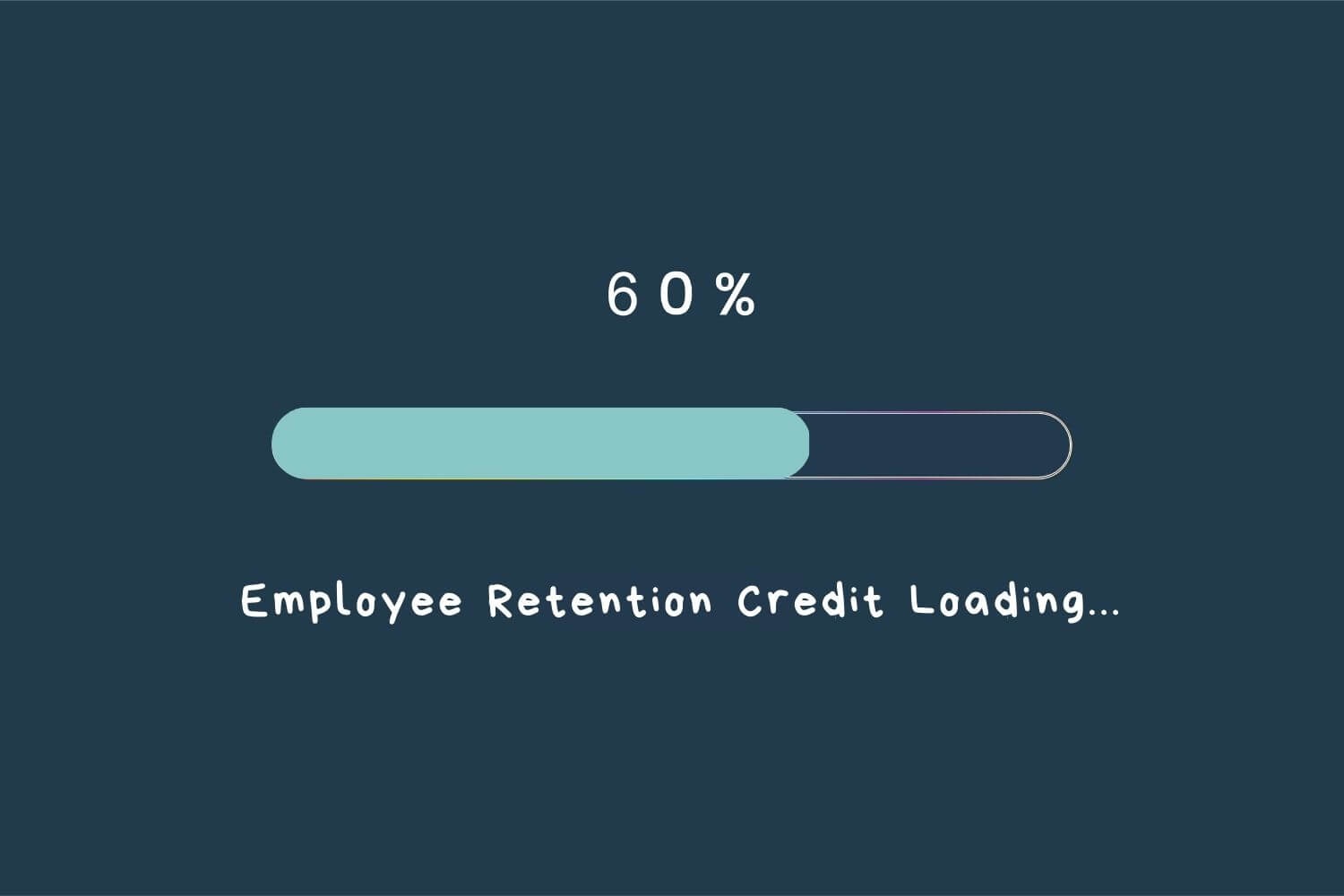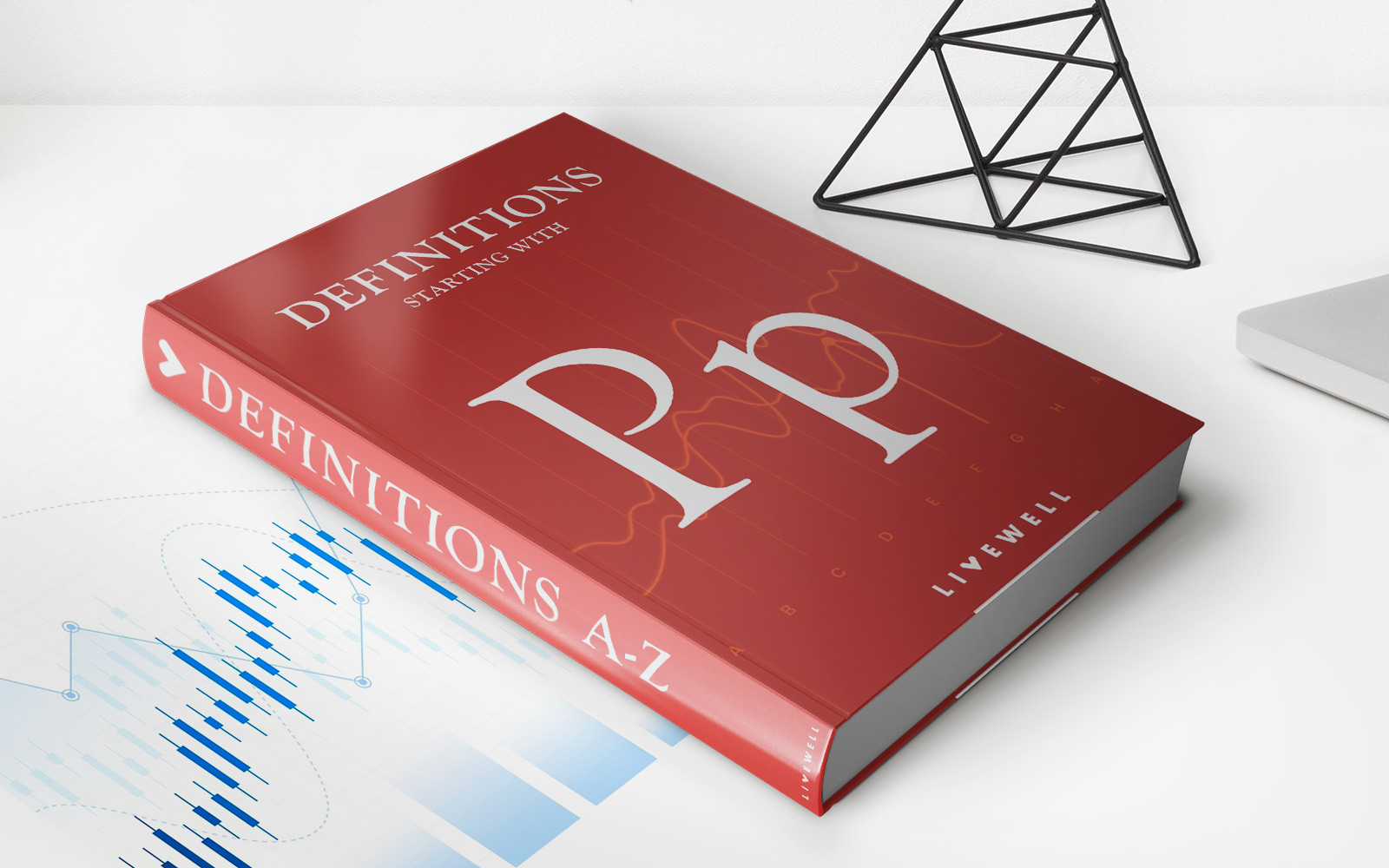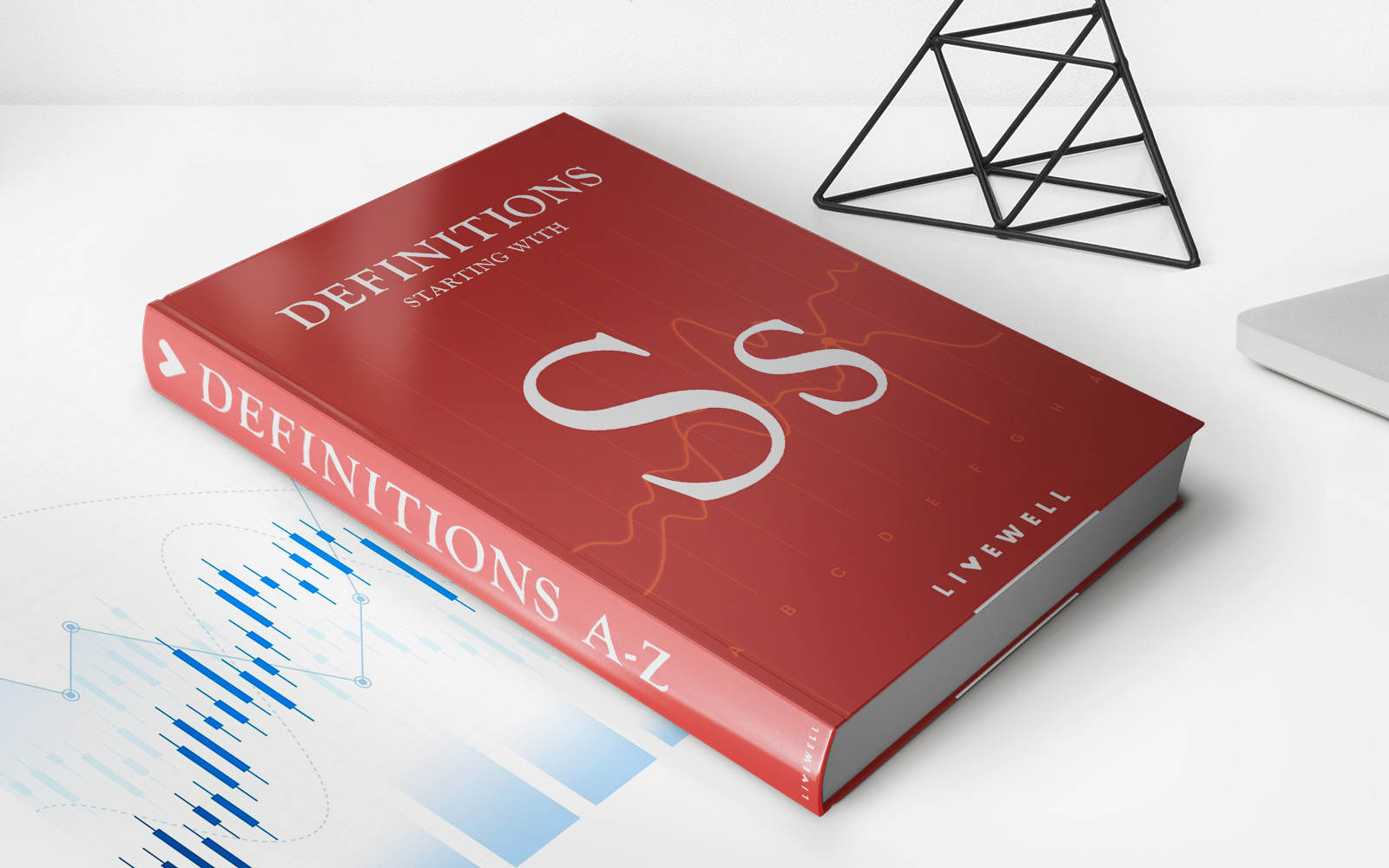Home>Finance>How Long Does It Take To Receive The Erc Credit


Finance
How Long Does It Take To Receive The Erc Credit
Published: January 10, 2024
Receive the Erc Credit quickly and efficiently. Find out how long it takes to process your Finance application and get your funds.
(Many of the links in this article redirect to a specific reviewed product. Your purchase of these products through affiliate links helps to generate commission for LiveWell, at no extra cost. Learn more)
Table of Contents
Introduction
Welcome to this comprehensive guide on the processing time for ERC credit. The Employee Retention Credit (ERC) has been a lifeline for many businesses during the COVID-19 pandemic, offering financial relief by providing a refundable tax credit to employers who retained their employees during periods of business disruption. Understanding the timing of when this credit will be received is crucial for businesses to effectively manage their cash flow and plan for the future.
In this article, we will delve into the factors that influence the processing time for the ERC credit and provide you with a typical timeline for its receipt. We will also explore options for expediting the processing time and potential delays to be aware of. So, whether you are a business owner, HR professional, or simply interested in the intricacies of the ERC credit, read on to gain valuable insights on how long it takes to receive the ERC credit.
Before we dive into the details, it’s important to note that the ERC credit is part of the Coronavirus Aid, Relief, and Economic Security (CARES) Act, and it has seen several updates and modifications since its introduction. We will focus on the general processing time and timelines based on the current regulations, but it’s always wise to consult with a tax professional or refer to the official IRS guidelines for the most accurate and up-to-date information specific to your situation.
Now, let’s explore the factors that can influence the processing time for the ERC credit.
Understanding the ERC Credit
The Employee Retention Credit (ERC) is a tax credit designed to help businesses keep their employees on payroll during times of economic hardship. It was implemented as a response to the COVID-19 pandemic and has been instrumental in providing financial relief to struggling businesses.
The ERC is available to businesses that meet certain eligibility requirements. These include experiencing either a full or partial suspension of operations due to government orders or a significant decline in gross receipts. The credit is calculated based on qualified wages paid to employees, with a maximum credit of up to $5,000 per employee for the year 2020 and up to $7,000 per employee per quarter for the year 2021.
It’s important to note that the ERC is a refundable tax credit. This means that if the amount of the credit exceeds the amount of federal employment taxes owed, the excess can be claimed as a refund. This makes the ERC particularly valuable for businesses, as it provides a direct injection of cash flow.
When it comes to understanding the processing time for the ERC credit, it’s essential to consider the various factors that can influence it.
Firstly, the complexity of your business’s payroll and tax situation can impact the processing time. If you have a relatively straightforward payroll system and have been diligent in keeping accurate records, the processing time may be smoother and faster. However, if your business operates across multiple states or has complex payroll structures, it may take longer to calculate and claim the ERC credit.
Additionally, the IRS’s workload and the volume of applications they receive can affect the processing time. During times of high demand, such as tax filing season or when new regulations are introduced, the IRS might face a backlog of claims, leading to delays in processing.
Furthermore, the accuracy and completeness of your ERC credit application are crucial. Any errors or missing information can result in rejections or requests for additional documentation, further prolonging the processing time.
Now that we have a better understanding of the ERC credit, let’s explore the typical timeline for processing it.
Factors Influencing ERC Credit Processing Time
There are several factors that can influence the processing time for the Employee Retention Credit (ERC). Understanding these factors can help businesses anticipate the timeline for receiving the credit and plan accordingly. Here are some key factors to consider:
- IRS Workload: The Internal Revenue Service (IRS) is responsible for processing ERC credit applications, and their workload and priorities can impact the processing time. During peak tax seasons or when there are significant changes to tax regulations, the IRS may experience a higher volume of applications, leading to potential delays in processing.
- Complexity of the Application: The complexity of your business and payroll structure can affect the processing time for the ERC credit. If you have a simple payroll system and straightforward eligibility requirements, the processing time may be relatively quicker. However, if your business operates across multiple locations, has intricate payroll structures, or requires additional documentation for eligibility, it may take longer to process your application.
- Accuracy of the Application: The accuracy and completeness of your ERC credit application are crucial for timely processing. Any errors or missing information can result in rejections or requests for additional documentation, which can significantly extend the processing time. It’s important to carefully review your application and double-check all information before submitting it to the IRS.
- Supporting Documentation: Providing the necessary supporting documentation along with your ERC credit application is essential. The IRS may request additional documentation to verify your eligibility for the credit, such as payroll records, financial statements, or proof of significant decline in gross receipts. Failing to provide the required documentation promptly can lead to delays in processing.
- Communication with the IRS: Regular communication with the IRS can help expedite the processing time for your ERC credit application. If you have any questions or concerns regarding your application, reaching out to the IRS or your tax professional for guidance can provide clarity and ensure a smoother processing experience.
Keep in mind that while these factors can influence the processing time for the ERC credit, it’s important to consult with a tax professional or refer to the official IRS guidelines for the most accurate information specific to your situation. Now that we understand the factors influencing the processing time, let’s explore the typical timeline for receiving the ERC credit.
Typical Timeline for ERC Credit Processing
When it comes to the processing time for the Employee Retention Credit (ERC), it’s essential to understand that every situation is unique, and the timeline can vary based on various factors. However, we can provide a general overview of the typical timeline for ERC credit processing based on current information:
Submission of ERC Credit Application: Businesses can submit their ERC credit application as part of their quarterly or annual employment tax return. The timeline for submission depends on the tax calendar and filing deadlines applicable to your business. It’s important to ensure that your application is accurate and complete to avoid unnecessary delays.
Initial Processing by the IRS: After submitting your ERC credit application, the IRS will review the information provided and confirm your eligibility for the credit. This initial processing typically takes a few weeks to several months, depending on the workload of the IRS and the complexity of your application.
Notification of Approval and Credit Calculation: Once the IRS determines your eligibility for the ERC credit, they will notify you regarding the approval and calculate the credit amount. This notification can be provided electronically or through regular mail. The timeline for this step can range from a few weeks to a couple of months.
Application of the Credit: If you have outstanding tax liabilities, the IRS will apply the approved ERC credit amount to offset those liabilities. If the credit amount exceeds your tax liabilities, the IRS will process the refund. The timeline for applying the credit and issuing the refund can vary depending on your specific tax situation and the workload of the IRS.
Receipt of the Credit or Refund: Once the credit is applied to your tax liabilities or the refund is issued, the timeline for receiving the ERC credit ultimately depends on the payment processing procedures of the IRS. This can take anywhere from a few days to several weeks for the funds to be deposited into your designated account.
It’s important to note that the timeline provided here is a general overview and can vary based on the unique circumstances of each business and the workload of the IRS. It’s always advisable to keep track of your application status and reach out to the IRS or consult with a tax professional if you have any concerns or questions during the processing period.
Now that we have a better understanding of the typical timeline for ERC credit processing, let’s explore options for expediting the processing time.
Expedited ERC Credit Processing
While the processing time for the Employee Retention Credit (ERC) is influenced by various factors, there are a few steps you can take to potentially expedite the processing time. Keep in mind that these options may not guarantee immediate processing, but they may help streamline the overall timeline:
- Ensure Accuracy and Completeness: One of the most effective ways to expedite the processing time is to ensure that your ERC credit application is accurate and complete. Double-check all the information provided, including payroll records, financial statements, and other supporting documentation. This can help minimize delays caused by errors or requests for additional information.
- File Electronically: Instead of mailing your ERC credit application, consider filing electronically. Electronic filing can speed up the process by reducing the time it takes for your application to reach the IRS and minimizing the chances of misplacement or delays caused by physical mail.
- Monitor Application Status: Keep a close eye on the status of your ERC credit application. The IRS provides online tools, such as the “Where’s My Refund?” portal, where you can track the progress of your application. Regularly checking the status can help you stay informed and potentially address any issues or follow-up requests promptly to avoid unnecessary delays.
- Proactive Communication: If you have any questions or concerns about your ERC credit application, don’t hesitate to reach out to the IRS or consult with a tax professional. Promptly addressing any issues or addressing inquiries from the IRS can help avoid delays and ensure a smoother processing experience.
- Professional Assistance: Engaging the services of a tax professional who specializes in ERC credit applications can be beneficial. These experts are well-versed in the process and can ensure that your application is accurate, complete, and in compliance with the IRS guidelines. Additionally, they can provide guidance and advocacy on your behalf to help expedite the processing time.
It’s important to note that while these steps can potentially speed up the processing time for the ERC credit, it ultimately depends on the workload and resources of the IRS. It’s advisable to remain patient and monitor the progress of your application while being prepared for the possibility of slight delays.
Now that we’ve explored options for expediting the processing time, let’s discuss potential delays in receiving the ERC credit.
Potential Delays in Receiving ERC Credit
While businesses eagerly await the receipt of the Employee Retention Credit (ERC), it’s important to be aware of potential delays that can occur during the processing and payment phases. Understanding these potential delays allows businesses to manage their expectations and make necessary adjustments to their cash flow planning. Here are some common factors that can cause delays in receiving the ERC credit:
- Backlog and Processing Time: During peak periods, such as tax filing seasons or when new regulations are introduced, the IRS may face a backlog of applications. This can lead to delays in processing and longer wait times to receive the ERC credit. It’s important to be aware of these factors and plan accordingly.
- Additional Documentation Requests: In some cases, the IRS may request additional documentation or information to verify eligibility or support the ERC credit application. If you receive such a request, responding promptly and providing the requested documentation can help prevent further delays. It’s advisable to keep copies of all submitted documents for your records.
- Complex Situations and Audits: Businesses that have complex payrolls, operate across multiple states, or have intricate ownership structures may face additional scrutiny or audits from the IRS. These situations can prolong the processing time and delay the receipt of the ERC credit. It’s essential to maintain accurate records and follow all guidelines to minimize the likelihood of audits or extended reviews.
- Errors or Discrepancies: Mistakes or discrepancies on the ERC credit application can cause delays in processing. It’s important to thoroughly review all information before submission and double-check for accuracy. Simple errors like typos or miscalculations can lead to rejections or requests for corrections, extending the processing time.
- Refund Offset or Debt Owed: If your business has outstanding tax liabilities or other debts owed to the federal government, the IRS may offset the approved ERC credit amount against those obligations. This offset can delay the receipt of the credit or result in a reduced refund. It’s important to reconcile any outstanding liabilities and communicate with the IRS to understand how they will affect your ERC credit payment.
While these potential delays are worth considering, it’s essential to remember that the exact timeline for receiving the ERC credit can vary based on individual circumstances and the workload of the IRS. Stay proactive, monitor your application status, and promptly address any issues or requests for information to help mitigate and minimize delays.
With this understanding of potential delays, let’s conclude our exploration of the ERC credit.
Conclusion
Understanding the processing time for the Employee Retention Credit (ERC) is crucial for businesses seeking financial relief during challenging times. While the exact timeline can vary based on multiple factors, we have explored the key aspects that influence the processing time and provided insight into what you can expect when applying for the ERC credit.
It’s important to remember that the ERC credit is part of the CARES Act and has evolved over time with updates and modifications. Staying informed and consulting with a tax professional or referring to the official IRS guidelines will ensure that you have the most accurate and up-to-date information for your situation.
We have discussed factors that can influence ERC credit processing time, including the IRS workload, application complexity, accuracy, supporting documentation, and communication. By understanding these factors, businesses can better anticipate the timeline and take steps to potentially expedite the processing time.
However, it’s also crucial to be aware of potential delays that can occur during processing, such as backlogs, additional documentation requests, complex situations, errors, and refund offset or debt owed. By being prepared for these potential delays, businesses can manage their expectations and make necessary adjustments to their cash flow planning.
In conclusion, while there is no exact formula to determine the processing time for the ERC credit, being proactive, accurate, and prepared can help streamline the process. Regularly monitoring your application status, promptly responding to any IRS requests, and seeking professional assistance when needed can all contribute to a smoother processing experience.
Remember, patience is key when awaiting the receipt of the ERC credit. Keep yourself informed, stay in communication with the IRS, and consult with a tax professional to navigate the process effectively. The ERC credit has been a valuable source of financial relief for businesses, and by understanding the processing time and potential delays, you can better leverage this credit to support your business’s needs.














